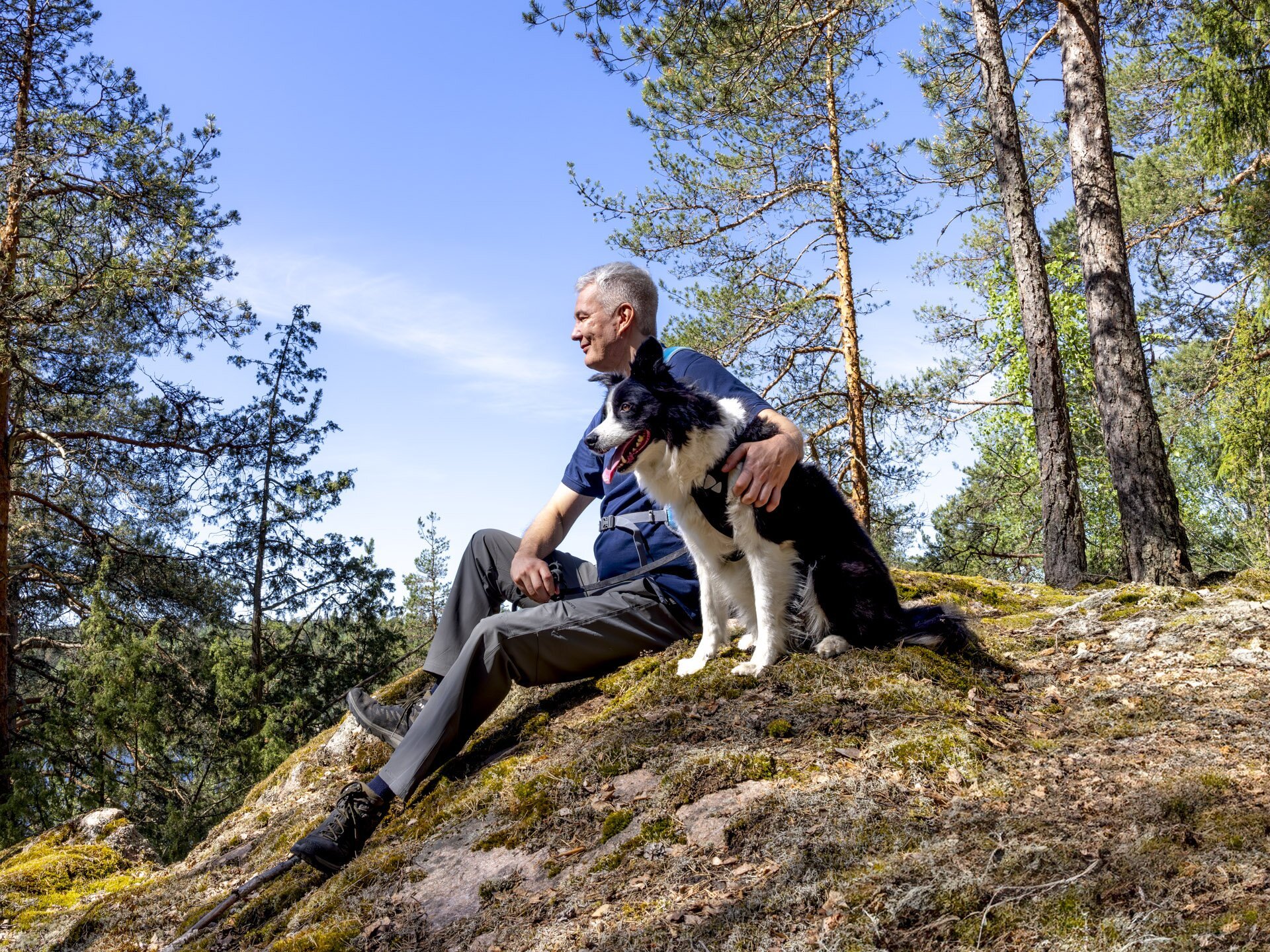While the climate crisis may feel like a distant problem, its impacts can be as close as the air we breathe. Research1 reveals links between climate change – rising global temperatures from increased greenhouse emissions – and the daily challenges of living with asthma or chronic obstructive pulmonary disease (COPD).
There is also evidence that climate-driven events affect lung health. For example, wildfires release harmful particles that can worsen air quality2.
“Climate change is directly linked to respiratory health through events like wildfires, which increase particulate pollution and can trigger asthma and breathing difficulties,” says Dr. Tari Haahtela, Professor Emeritus of Clinical Allergology at the University of Helsinki.
Asthma and Chronic obstructive pulmonary disease (COPD)
Asthma = Inflammatory disease of the mucous membrane that lines the airways, which causes constriction of the bronchial tubes.
COPD = Slowly progressive lung disease in which the small airways become restricted, lung tissue is destroyed, and exhalation slows down.
Extreme weather increases respiratory problems
As average global temperatures continue to rise each year, a growing body of research predicts a corresponding rise in respiratory disease and cases of asthma and COPD.
“We are already seeing the effects of a warming climate on respiratory health, and the risks will only continue to grow,” Haahtela warns.
Research has shown that:
- Extreme weather events affect lung health directly3.
- Climate change affects lung health indirectly by changes in allergen levels, longer allergen seasons, and worsened air quality3.
- Climate-related changes may lead to higher incidence of viral infections, like the flu3.
People already with chronic respiratory disease could be among those most susceptible to the adverse effects of climate change3. - Childhood asthma rates are expected to rise. Studies are predicting an increase of 4–11% in annual asthma cases in the United States.4
Heatwaves and longer pollen seasons can worsen symptoms
The last eight years have been the hottest on record, with heatwaves becoming more frequent and intense. Extreme heat doesn’t just make the air feel heavy and suffocating. For people with respiratory conditions like asthma or COPD, it puts extra strain on the body.
“In heatwaves, your body’s ability to regulate temperature becomes overwhelmed, especially if your respiratory system is already compromised,” Haahtela explains.

Also, longer and more intense pollen seasons are worsening symptoms for people with seasonal allergies and allergic asthma. In Finland, Haahtela has seen for himself that the birch pollen season now starts one to two weeks earlier and lasts longer than it did 15 years ago.
“For people allergic to birch or grass pollen, this means an extended period of suffering,” Haahtela says.
In extreme cases, climate change also brings rare phenomena like “thunderstorm asthma”, where storms shatter pollen grains into tiny particles that strong winds carry deep into the lungs. This can cause sudden and severe asthma attacks, even in people without a history of asthma.
“Thunderstorm asthma5 is an extreme manifestation of air pollution during specific weather events,” Haahtela says, noting how desertification, also a result of climate change, in regions like the Sahara is worsening these events, especially in Mediterranean countries.
Protect lung health by living closer to nature
Climate change driving extreme weather events is not the only strain on our lungs. Research also ties respiratory disease to a deeper issue, our separation from nature. According to the UN, 70% of the world’s population is expected to live in cities by 2050.
This disconnection from wider nature is impacting our lung health, and, according to Haahtela, can be clearly linked6 to a rise in asthma and allergy cases.
“Our separation from wider nature lowers our exposure to diverse microbes and biogenic chemicals (what we breathe, eat, drink and touch), and disrupts our immune tolerance, making it harder for our bodies to distinguish between harmless substances, like pollen or pet hair, from actual threats,” Haahtela says.
Living closer to nature and taking natural elements back to our urban life strengthens the immune system, reducing the risk of harmful inflammatory responses that lead to conditions like asthma and allergies.
So, one way to protect lung health from the worsening impacts of climate change and accelerating nature loss may lie in our relationship with nature. Haahtela points out that recognising this close link between our well-being and the planet’s health gives us even more reasons to protect it.
“By reconnecting with wider nature and making thoughtful choices in life, we don’t just protect our lungs; we strengthen our bond with the planet that sustains us.”
References
1Andersen ZJ, Vicedo-Cabrera AM, Hoffmann B, et al. Climate change and respiratory disease: clinical guidance for healthcare professionals. Breathe. 2023;19:220222. https://breathe.ersjournals.com/content/19/2/220222
2Wilgus ML, Merchant M. Clearing the air: Understanding the impact of wildfire smoke on asthma and COPD. Healthcare (Basel). 2024 Jan 25;12(3):307. doi: 10.3390/healthcare12030307. PMID: 38338192; PMCID: PMC10855577. https://pubmed.ncbi.nlm.nih.gov/38338192/
3Barne C, Alexis NE, Bernstein JA, Cohn JR, Demain JG, Horner E, Levetin E, Nei A, Phipatanakul W. Climate change and our environment: The effect on respiratory and allergic disease. J Allergy Clin Immunol Pract. 2013 Mar;1(2):137-41. https://www.ncbi.nlm.nih.gov/pmc/articles/PMC3654689/
4 EPA, 2023. Climate Change and Children’s Health and Well-Being in the United States. U.S. Environmental Protection Agency, EPA 430-R-23-001.
5 Kevat A. Thunderstorm asthma: Looking back and looking forward. J Asthma Allergy. 2020;13:293-299. https://doi.org/10.2147/JAA.S265697
6 Haahtela T, Laatikainen T, von Hertzen L, et al. A short history from Karelia study to biodiversity and public health interventions. Front Allergy. 2023;4:1152927. doi: 10.3389/falgy.2023.1152927. https://pubmed.ncbi.nlm.nih.gov/36998574/









